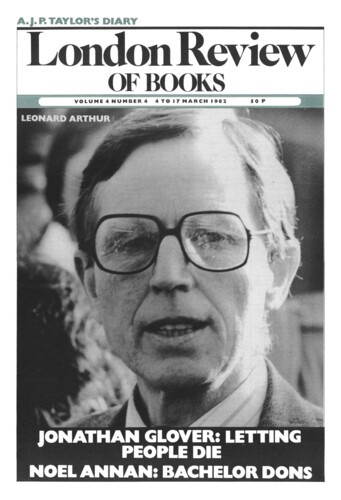Never the twain
Mark Amory, 4 March 1982
In a letter to Cyril Connolly in 1948 Evelyn Waugh listed the ideas that had been in his mind when he was at work on The Loved One: immediately after ‘over-excitement with the scene at Forest Lawn’ came ‘The Anglo-American impasse. Never the twain shall meet.’ Not a new thought even thirty years ago, but, though we may run into one another occasionally in the corridors of the Humanity Research Center of the University of Texas (their territory), or share a train compartment on the way to Combe Florey (ours), it still holds good for those in the Waugh industry. The English and American schools remain distinct, superficially polite, but with impatience at least and very occasionally something more like contempt lurking beneath the surface. We are not weighty figures. No major critic on either side of the Atlantic has yet undertaken a serious study (Malcolm Bradbury’s slender introduction is the nearest approach). Many of Waugh’s English acquaintance have written brief, anecdotal accounts based on their memories of him – John St John’s To the War with Waugh has 56 pages, Frances Donaldson’s Portrait of a Country Neighbour 118, while those collected in Evelyn Waugh and his World are naturally shorter still. It is true that Alec Waugh returned several times to the subject of his brother and wrote at some length: but then he flaunted his love of America and American ways. Their contributions have been more rigorous, factual and detailed and include a study of Waugh’s life up to 1939 and a Checklist of Primary and Secondary Material, while there is a whole book about his relationship with his agent on the way, as well as a study of the comic novels rumoured to be longer than all of them put together.

